Francesco Santini
Department of Radiology, Division of Radiological Physics, University Hospital Basel, University of Basel, Basel, Switzerland, Department of Biomedical Engineering, University of Basel, Basel, Switzerland, Department of Radiology, University Hospital Basel, University of Basel, Basel, Switzerland
An encoding of argumentation problems using quadratic unconstrained binary optimization
Sep 09, 2024Abstract:In this paper, we develop a way to encode several NP-Complete problems in Abstract Argumentation to Quadratic Unconstrained Binary Optimization (QUBO) problems. In this form, a solution for a QUBO problem involves minimizing a quadratic function over binary variables (0/1), where the coefficients can be represented by a symmetric square matrix (or an equivalent upper triangular version). With the QUBO formulation, exploiting new computing architectures, such as Quantum and Digital Annealers, is possible. A more conventional approach consists of developing approximate solvers, which, in this case, are used to tackle the intrinsic complexity. We performed tests to prove the correctness and applicability of classical problems in Argumentation and enforcement of argument sets. We compared our approach to two other approximate solvers in the literature during tests. In the final experimentation, we used a Simulated Annealing algorithm on a local machine. Also, we tested a Quantum Annealer from the D-Wave Ocean SDK and the Leap Quantum Cloud Service.
Deep Anatomical Federated Network (Dafne): an open client/server framework for the continuous collaborative improvement of deep-learning-based medical image segmentation
Feb 14, 2023Abstract:Semantic segmentation is a crucial step to extract quantitative information from medical (and, specifically, radiological) images to aid the diagnostic process, clinical follow-up. and to generate biomarkers for clinical research. In recent years, machine learning algorithms have become the primary tool for this task. However, its real-world performance is heavily reliant on the comprehensiveness of training data. Dafne is the first decentralized, collaborative solution that implements continuously evolving deep learning models exploiting the collective knowledge of the users of the system. In the Dafne workflow, the result of each automated segmentation is refined by the user through an integrated interface, so that the new information is used to continuously expand the training pool via federated incremental learning. The models deployed through Dafne are able to improve their performance over time and to generalize to data types not seen in the training sets, thus becoming a viable and practical solution for real-life medical segmentation tasks.
MRI lung lobe segmentation in pediatric cystic fibrosis patients using a recurrent neural network trained with publicly accessible CT datasets
Aug 31, 2021



Abstract:Purpose: To introduce a widely applicable workflow for pulmonary lobe segmentation of MR images using a recurrent neural network (RNN) trained with chest computed tomography (CT) datasets. The feasibility is demonstrated for 2D coronal ultra-fast balanced steady-state free precession (ufSSFP) MRI. Methods: Lung lobes of 250 publicly accessible CT datasets of adults were segmented with an open-source CT-specific algorithm. To match 2D ufSSFP MRI data of pediatric patients, both CT data and segmentations were translated into pseudo-MR images, masked to suppress anatomy outside the lung. Network-1 was trained with pseudo-MR images and lobe segmentations, and applied to 1000 masked ufSSFP images to predict lobe segmentations. These outputs were directly used as targets to train Network-2 and Network-3 with non-masked ufSSFP data as inputs, and an additional whole-lung mask as input for Network-2. Network predictions were compared to reference manual lobe segmentations of ufSSFP data in twenty pediatric cystic fibrosis patients. Manual lobe segmentations were performed by splitting available whole-lung segmentations into lobes. Results: Network-1 was able to segment the lobes of ufSSFP images, and Network-2 and Network-3 further increased segmentation accuracy and robustness. The average all-lobe Dice similarity coefficients were 95.0$\pm$2.3 (mean$\pm$pooled SD [%]), 96.4$\pm$1.2, 93.0$\pm$1.8, and the average median Hausdorff distances were 6.1$\pm$0.9 (mean$\pm$SD [mm]), 5.3$\pm$1.1, 7.1$\pm$1.3, for Network-1, Network-2, and Network-3, respectively. Conclusions: RNN lung lobe segmentation of 2D ufSSFP imaging is feasible, in good agreement with manual segmentations. The proposed workflow might provide rapid access to automated lobe segmentations for various lung MRI examinations and quantitative analyses.
Block Argumentation
Jan 18, 2019Abstract:We contemplate a higher-level bipolar abstract argumentation for non-elementary arguments such as: X argues against Ys sincerity with the fact that Y has presented his argument to draw a conclusion C, by omitting other facts which would not have validated C. Argumentation involving such arguments requires us to potentially consider an argument as a coherent block of argumentation, i.e. an argument may itself be an argumentation. In this work, we formulate block argumentation as a specific instance of Dung-style bipolar abstract argumentation with the dual nature of arguments. We consider internal consistency of an argument(ation) under a set of constraints, of graphical (syntactic) and of semantic nature, and formulate acceptability semantics in relation to them. We discover that classical acceptability semantics do not in general hold good with the constraints. In particular, acceptability of unattacked arguments is not always warranted. Further, there may not be a unique minimal member in complete semantics, thus sceptic (grounded) semantics may not be its subset. To retain set-theoretically minimal semantics as a subset of complete semantics, we define semi-grounded semantics. Through comparisons, we show how the concept of block argumentation may further generalise structured argumentation.
On Looking for Local Expansion Invariants in Argumentation Semantics: a Preliminary Report
Jul 30, 2018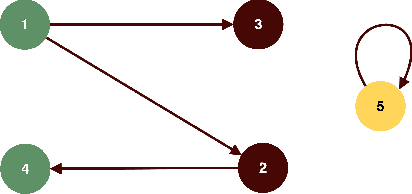
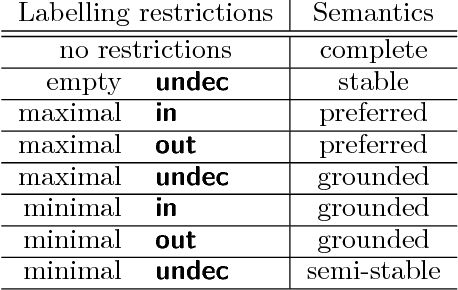
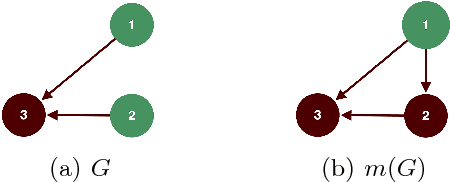
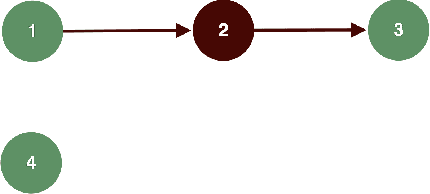
Abstract:We study invariant local expansion operators for conflict-free and admissible sets in Abstract Argumentation Frameworks (AFs). Such operators are directly applied on AFs, and are invariant with respect to a chosen "semantics" (that is w.r.t. each of the conflict free/admissible set of arguments). Accordingly, we derive a definition of robustness for AFs in terms of the number of times such operators can be applied without producing any change in the chosen semantics.
Timed Soft Concurrent Constraint Programs: An Interleaved and a Parallel Approach
Apr 22, 2014



Abstract:We propose a timed and soft extension of Concurrent Constraint Programming. The time extension is based on the hypothesis of bounded asynchrony: the computation takes a bounded period of time and is measured by a discrete global clock. Action prefixing is then considered as the syntactic marker which distinguishes a time instant from the next one. Supported by soft constraints instead of crisp ones, tell and ask agents are now equipped with a preference (or consistency) threshold which is used to determine their success or suspension. In the paper we provide a language to describe the agents behavior, together with its operational and denotational semantics, for which we also prove the compositionality and correctness properties. After presenting a semantics using maximal parallelism of actions, we also describe a version for their interleaving on a single processor (with maximal parallelism for time elapsing). Coordinating agents that need to take decisions both on preference values and time events may benefit from this language. To appear in Theory and Practice of Logic Programming (TPLP).
ConArg: a Tool to Solve Abstract Argumentation Frameworks with Constraints
Jan 16, 2013



Abstract:ConArg is a Constraint Programming-based tool that can be used to model and solve different problems related to Abstract Argumentation Frameworks (AFs). To implement this tool we have used JaCoP, a Java library that provides the user with a Finite Domain Constraint Programming paradigm. ConArg is able to randomly generate networks with small-world properties in order to find conflict-free, admissible, complete, stable grounded, preferred, semi-stable, stage and ideal extensions on such interaction graphs. We present the main features of ConArg and we report the performance in time, showing also a comparison with ASPARTIX [1], a similar tool using Answer Set Programming. The use of techniques for constraint solving can tackle the complexity of the problems presented in [2]. Moreover we suggest semiring-based soft constraints as a mean to parametrically represent and solve Weighted Argumentation Frameworks: different kinds of preference levels related to attacks, e.g., a score representing a "fuzziness", a "cost" or a probability, can be represented by choosing different instantiation of the semiring algebraic structure. The basic idea is to provide a common computational and quantitative framework.
Soft Constraints for Quality Aspects in Service Oriented Architectures
Jun 22, 2009
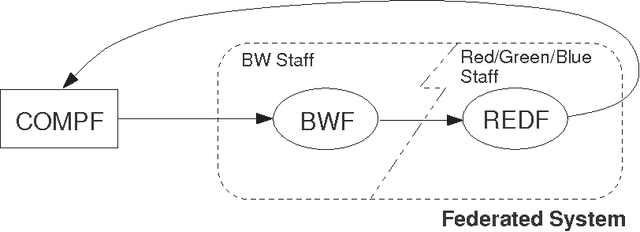
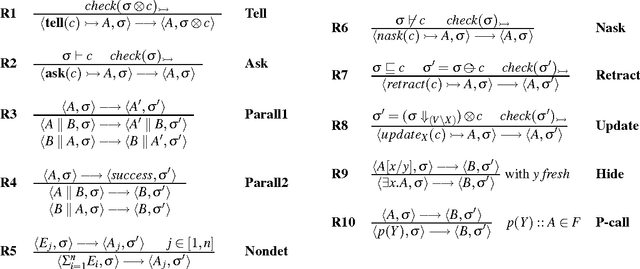
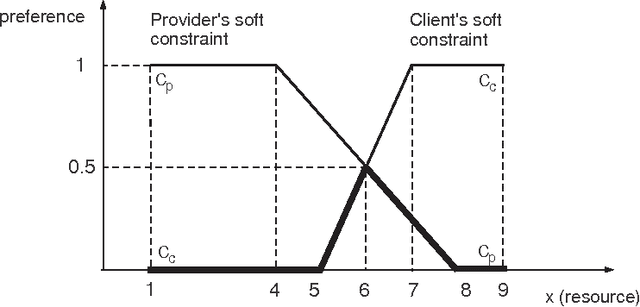
Abstract:We propose the use of Soft Constraints as a natural way to model Service Oriented Architecture. In the framework, constraints are used to model components and connectors and constraint aggregation is used to represent their interactions. The "quality of a service" is measured and considered when performing queries to service providers. Some examples consist in the levels of cost, performance and availability required by clients. In our framework, the QoS scores are represented by the softness level of the constraint and the measure of complex (web) services is computed by combining the levels of the components.
Unicast and Multicast Qos Routing with Soft Constraint Logic Programming
Apr 21, 2008



Abstract:We present a formal model to represent and solve the unicast/multicast routing problem in networks with Quality of Service (QoS) requirements. To attain this, first we translate the network adapting it to a weighted graph (unicast) or and-or graph (multicast), where the weight on a connector corresponds to the multidimensional cost of sending a packet on the related network link: each component of the weights vector represents a different QoS metric value (e.g. bandwidth, cost, delay, packet loss). The second step consists in writing this graph as a program in Soft Constraint Logic Programming (SCLP): the engine of this framework is then able to find the best paths/trees by optimizing their costs and solving the constraints imposed on them (e.g. delay < 40msec), thus finding a solution to QoS routing problems. Moreover, c-semiring structures are a convenient tool to model QoS metrics. At last, we provide an implementation of the framework over scale-free networks and we suggest how the performance can be improved.
 Add to Chrome
Add to Chrome Add to Firefox
Add to Firefox Add to Edge
Add to Edge